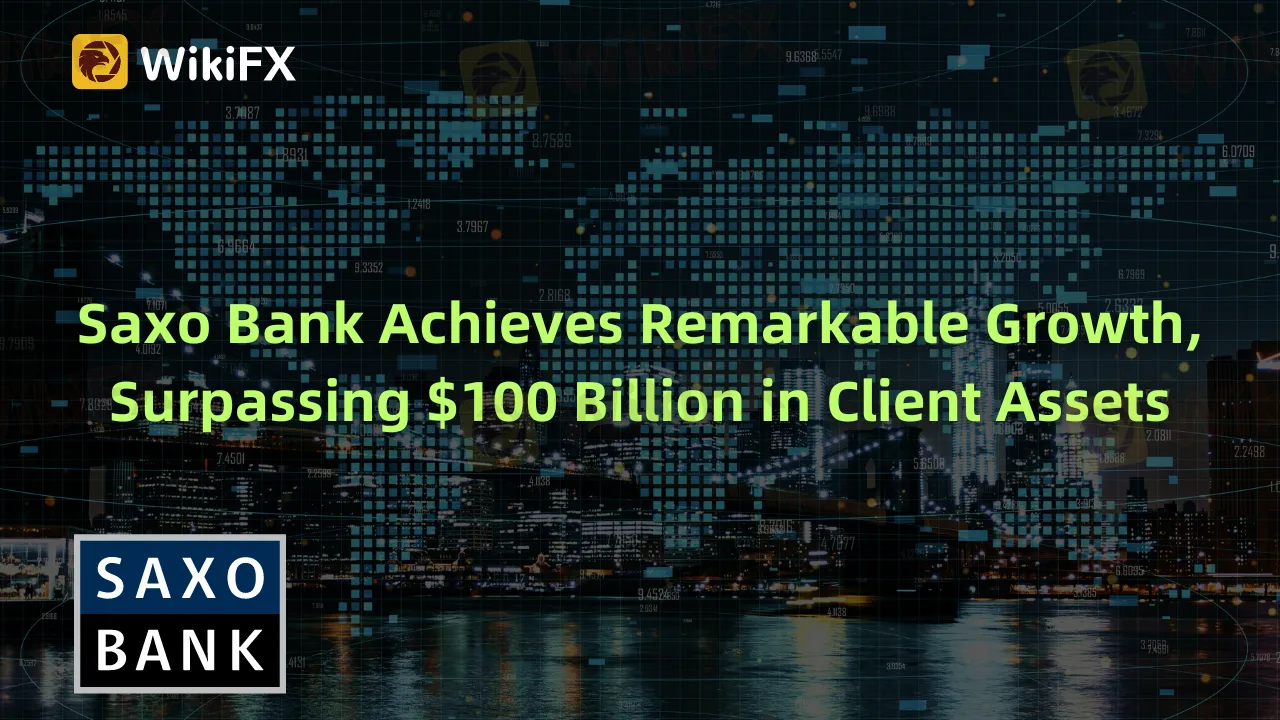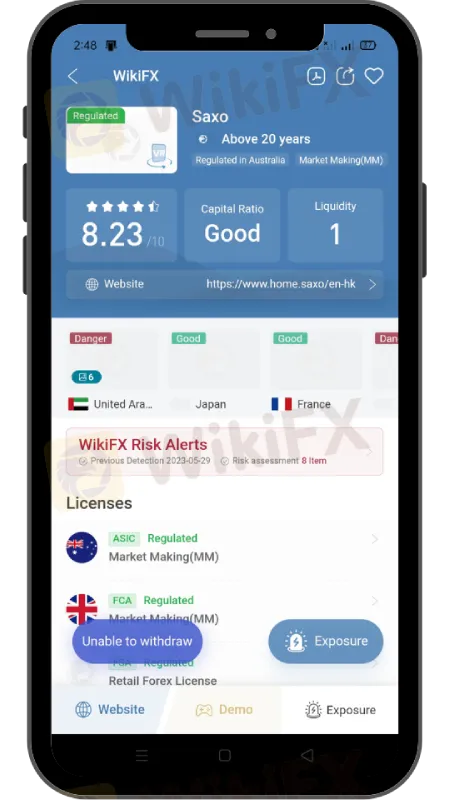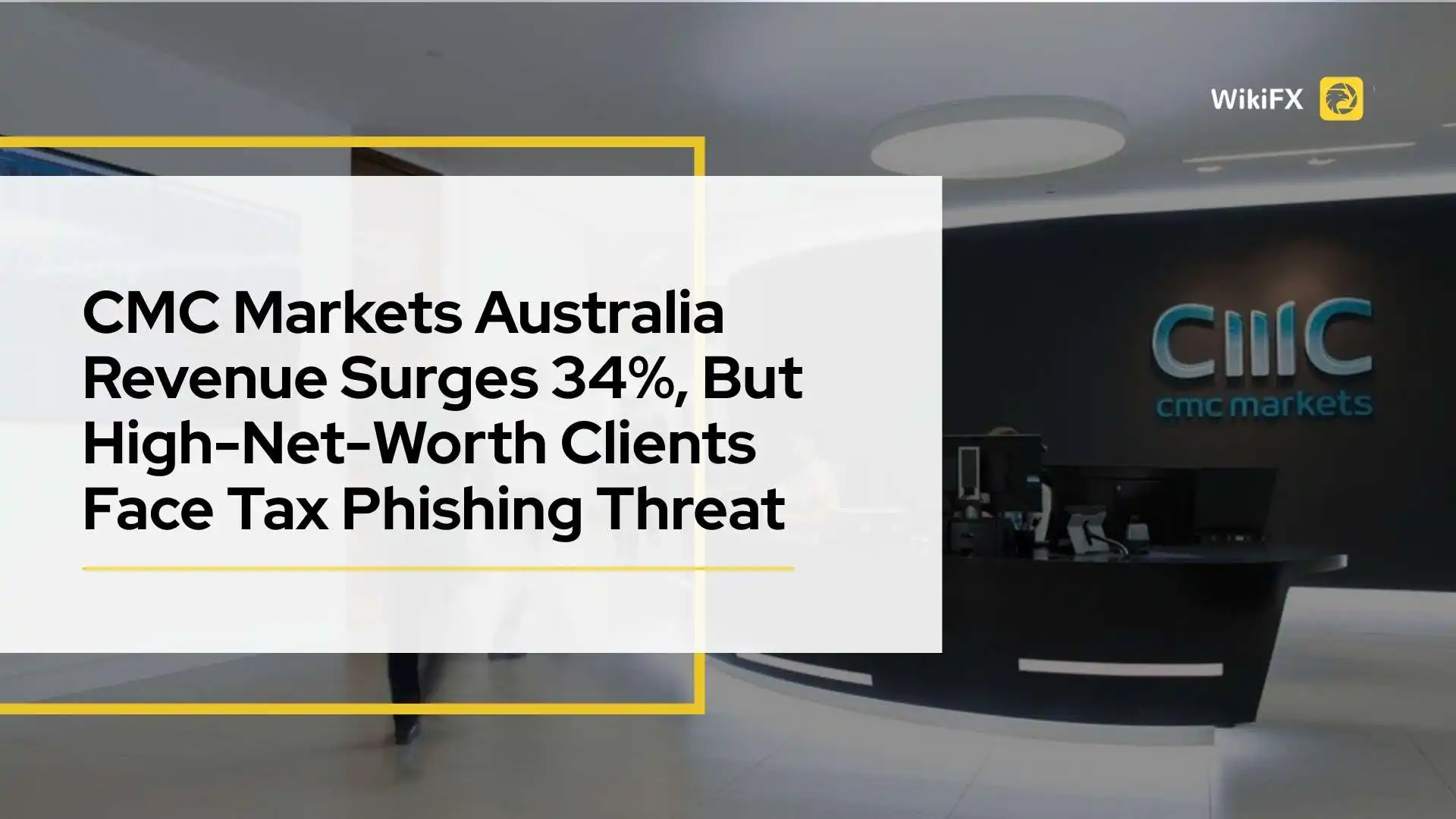简体中文
繁體中文
English
Pусский
日本語
ภาษาไทย
Tiếng Việt
Bahasa Indonesia
Español
हिन्दी
Filippiiniläinen
Français
Deutsch
Português
Türkçe
한국어
العربية
Saxo Bank Achieves Remarkable Growth, Surpassing $100 Billion in Client Assets
Abstract:Saxo Bank, a Danish brokerage firm, has reached $100 billion in client assets, despite a challenging economic climate. While 2022 saw decreased revenues and net profit, the bank's client base grew significantly. The firm attributes its success to trusted client relationships and robust financial services.

In a landmark achievement, Saxo Bank, a leading brokerage firm headquartered in Copenhagen, announced it has amassed over $100 billion in client assets. This significant milestone is a testament to the steady expansion and growth of the Danish financial firm, a journey that has been marked by resilience, robust strategies, and a persistent commitment to client-centric services.
Twenty-five years saw Saxo Bank accumulate $20 billion in assets under management. However, the recent five-year period witnessed an exponential surge, resulting in an additional $80 billion. This rapid ascent to the $100 billion benchmark not only underscores the financial institution's enduring growth in client numbers and deposits but also cements its standing as a significant force in the financial world. The feat is all the more noteworthy given the current, uncertain macroeconomic climate.
Saxo Bank's CEO and founder, Kim Fournais, expressed gratitude for the trust shown by their clients, which has played a pivotal role in reaching this historic benchmark. He noted that the accomplishment is a clear indicator of Saxo Bank's competence in serving its expanding client base, even in volatile market conditions. Fournais highlighted that Saxo Bank continues to earn an increasing share of its clients' wealth, thanks to its competitive deposit interest rates, comprehensive asset management solutions, and robust trading platforms offering access to global markets across various asset classes.

Despite this significant achievement, the brokerage firm did encounter a few bumps in its financial performance in the fiscal year 2022. Reports indicated that revenues and net income witnessed a slight downturn due to a decrease in customer trading activity compared to the previous year.
The financial year 2022 saw the bank's annual revenues dip by 1.6%, amounting to DKK 4.45 billion ($635 million), from DKK 4.52 billion the previous year. The net profit also shrunk by 6% to DKK 711 million ($101.3 million) from DKK 755 million in 2021. Saxo Bank attributes this drop to a decrease in trading activity, influenced by the turbulent macroeconomic scenario, which led to a reluctance among clients to trade. However, a silver lining was seen in the rise in net interest income, buoyed by higher interest rates, which offset some of the loss from the reduced trading activity.
The bank's active accounts swelled to an unprecedented 876,000, largely fuelled by its institutional business. Despite a remarkable onboarding of over 56,000 clients from 2021, total clients' assets under custody saw a minor dip to DKK 584 billion from DKK 595 billion in the preceding year. The bank attributed this decline primarily to a downturn in the equity market, though some of the loss was mitigated by positive net funding from clients.
Despite the aforementioned challenges, Saxo Bank was able to maintain its cost level with minimal fluctuations. This was largely due to the postponed completion of the BinckBank migration, which has inadvertently increased costs and added complexity by running two infrastructures simultaneously. Saxo Bank also managed to improve its cost/income ratio, thanks to cuts in staff costs, reductions in administrative expenses, and a decrease in marketing expenditure.
Overall, despite a mixed bag of financial results, Saxo Bank's significant milestone in client asset accumulation signals its continued growth trajectory and resilience in a volatile market environment.
To keep abreast of the latest updates, get the WikiFX App on your mobile device. You can download the app using this link: https://social1.onelink.me/QgET/px2b7i8n

Disclaimer:
The views in this article only represent the author's personal views, and do not constitute investment advice on this platform. This platform does not guarantee the accuracy, completeness and timeliness of the information in the article, and will not be liable for any loss caused by the use of or reliance on the information in the article.
Read more

CMC Markets Australia Revenue Surges 34%, But High-Net-Worth Clients Face Tax Phishing Threat
CMC Markets Australia reports a 34% revenue surge. Simultaneously, the company's high-net-worth clients are facing a serious tax-related phishing threat.

E TRADE Review: Traders Report Tax on Withdrawals, Poor Customer Service & Fund Scams
Has your E Trade forex trading account been charged a withholding tax fee? Did your account get blocked because of multiple deposits? Did you have to constantly call the officials to unblock your account? Failed to open a premium savings account despite submitting multiple documents? Is fund transfer too much of a hassle at E Trade? Did you find the E Trade customer support service not helpful? In this E Trade review article, we have shared certain complaints. Take a look!

mBank Exposed: Top Reasons Why Customers are Giving Thumbs Down to This Bank
Do you find mBank services too slow or unresponsive? Do you find your account getting blocked? Failing to access your account online due to several systemic glitches? Can’t perform the transactions on the mBank app? Do you also witness inappropriate stop-level trade execution by the financial services provider? You are not alone! Frustrated by these unfortunate circumstances, many of its clients have shared negative mBank reviews online. In this article, we have shared some of the reviews. Read on!

In-Depth Uniglobe Markets Commission Fees and Spreads Analysis – What Traders Should Really Know
For experienced traders, the cost of execution is a critical factor in broker selection. Low spreads, fair commissions, and transparent pricing can be the difference between a profitable and a losing strategy over the long term. This has led many to scrutinize the offerings of brokers like Uniglobe Markets, which presents a tiered account structure promising competitive conditions. However, a professional evaluation demands more than a surface-level look at marketing claims. It requires a deep, data-driven analysis of the real trading costs, set against the backdrop of the broker's operational integrity and safety. This comprehensive Uniglobe Markets commission fees and spreads analysis will deconstruct the broker's pricing model, examining its account types, typical spreads, commission policies, and potential ancillary costs. Using data primarily sourced from the global broker inquiry platform WikiFX, we will provide a clear-eyed view of the Uniglobe Markets spreads commissions prici
WikiFX Broker
Latest News
In-Depth Uniglobe Markets Commission Fees and Spreads Analysis – What Traders Should Really Know
WikiFX's New Evaluation of ATM Capital LTD: Does its License Protect the Arab Investor?
Is Axi Legit? A Data-Driven Analysis of Its Regulatory Standing and Trader Feedback
How a Fake Moomoo Ad Led to the “New Dream Voyage 5” Scam
FXPesa Review: Are Traders Facing High Slippage, Fund Losses & Withdrawal Denials?
Trive Investigation: High Score, Hidden Risk - The Profit Paradox
CMC Markets Australia Revenue Surges 34%, But High-Net-Worth Clients Face Tax Phishing Threat
Bessent believes there won't be a recession in 2026 but says some sectors are challenged
mBank Exposed: Top Reasons Why Customers are Giving Thumbs Down to This Bank
Young Singaporean Trader Grew USD 52 into a USD 107,700 Portfolio
Currency Calculator



